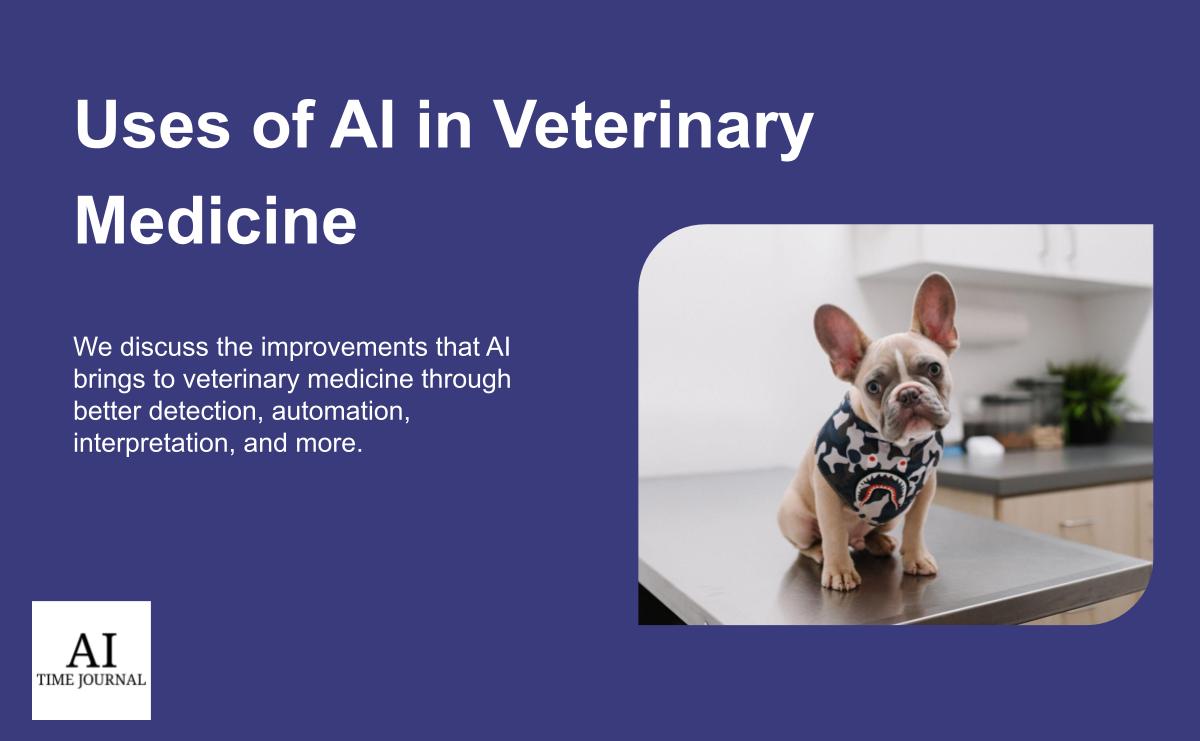
Given how fast modern society has become, we are facing great pressure coming from all aspects of life, such as professional work, financial problems, interpersonal communication, and academic bottlenecks. Therefore, more and more people tend to have a pet at home since cute animals are like little angels that can accompany us, bring us happiness, and help us forget the pressure for a while.
Personally, I, myself, am a pet owner. I have a one-year-old Shiba Inu, and I really love him. Since I started to take care of this little guy, my only hope for my pet is that he will always be healthy, which I know is the wish of most pet owners.
However, animal diagnosis has never been an easy thing. To some extent, it is even more difficult to make progress than human healthcare. For centuries, human healthcare was always the focus of medical development. To provide better medical support for human patients, we have invested tons of fundings, high-tech machines, and AI-based software into human healthcare. To learn more about the development of human healthcare, the 5 Advantages of Telemedicine in Healthcare and Conversational AI in Healthcare, will be good references.
Thankfully, the use of AI gradually transformed to veterinary medicine and brought benefits to the industry. AI applications help to improve accuracy and efficiency when detecting animals’ diseases and providing treatments. The technology becomes a good assistant when collaborating with veterinarians. The following article will introduce the four uses of AI in veterinary medicine.
Detect Rare Animals’ Diseases
One of AI’s primary uses in veterinary medicine is detecting potential animal diseases. Our fluffy friends cannot talk, which makes it difficult for doctors to diagnose their health conditions. Fortunately, the AI application used in veterinary medicine can help doctors correctly identify more intractable diseases for animals.
For instance, AI can be used to detect Addison’s disease in dogs, which can have very serious consequences for dogs. Addison’s disease is usually hard to diagnose in dogs. Since the symptoms of the disease are similar to many common dog illnesses, this often leads doctors to overlook the possibility of Addison’s disease. A dog with Addison’s disease may have symptoms such as:
- Losing weight
- Unhappy and depressed
- Drinking too much water
- Unable to face stress
- Frequently diarrhea
- Poor appetite
Even though properly timed treatment can help dogs with Addison’s disease have normal lifespans, all these vague and common symptoms have become hindrances for doctors trying to accurately diagnose the disease.
Thankfully, the application of AI provides a solution to this dilemma. Nowadays, an AI-based algorithm developed by the veterinarians at the University of California, Davis School of Veterinary Medicine, plays a significant role in disease diagnosis. Addison’s disease leads to insufficient hormone secretion in dogs, which will show some slight differences in dogs’ blood test results. The AI-based algorithm is trained to identify the differences and report abnormal blood tests.
In this situation, the algorithm is working as an alarm, telling veterinarians which medical cases are suspected of potential Addison’s disease. Then, veterinarians will proceed with further diagnostic testing for these cases. With learning and training, the accuracy rate of this AI-powered algorithm can reach 99 percent.
Predict Potential Animal Disease
In addition to detecting rare diseases, AI applications in veterinary medicine can also help doctors to predict animals’ healthy conditions and the risk of getting potential diseases in the following years and provide proactive care.
For example, AI is largely used in predicting Chronic kidney disease (CKD) for cats. According to AAHA, CKD has become the 1st cause of death in cats older than five, and about 30% of cats over 12 years old suffer from this disease. The usual symptoms of CKD include:
- Bad breath
- Poor hair quality
- Weight loss
- Depression
- Variable appetite
Well, an AI-powered algorithm was developed by the American College of Veterinary Internal Medicine. By analyzing the data from more than 150,000 cats, the algorithm now has the ability to predict the potential risk of a cat developing CKD. By analyzing and learning from the huge amount of health data, the algorithm can predict whether a cat will get the disease in the next two years or not with an accuracy of 95%.
Even though the prediction can not prevent the occurrence of CKD, it allows veterinarians to take proactive care of the “future patients,” which will help the cats to suffer less and live longer and happier lives.
Automatically Code Notes for Doctors
Taking notes is significant and necessary for both doctors and vets. The records provide the health background and medical experience of pets, which work as accurate resources for vets to diagnose the condition of animal patients.
However, taking vet notes is not that simple. Before AI intervention, the traditional way of taking vet clinical notes was by handwriting, which made the work time-consuming, messy, and hard to copy. The difficulty had been bothering vets for decades until James Zou, an assistant professor of biomedical data science, invented an AI-powered algorithm called DeepTag.
Using artificial intelligence and applying natural language processing, the software is able to understand the texts of doctor’s notes and transform the textual information into codes that represent specific symptoms and diseases. In this way, it becomes easier to extract information from clinical databases, compare medical cases, and identify suspicious cases with potential disease risks.
Better Interpretation of Medical Images
Another way AI benefits veterinary medicine is by providing a better interpretation of medical images, such as radiology results. AI-based software can take over the simple and tedious work of veterinary radiologists, such as analyzing data, collecting information, and classifying cases. More importantly, it can provide suggestions to prioritize serious cases based on its interpretation of medical images.
Even though the AI-based software cannot fully replace the doctor’s role, it can streamline the process and improve the efficiency of diagnosis.
SignalPET is an AI-powered software that is widely accepted in veterinary medicine. The software aims to provide intelligent image interpretations for both veterinarians and patients in an innovative way. By applying machine learning classification techniques, the software can provide objective, consistent, and data-driven results within 10 minutes after it accesses the animal radiographs.
